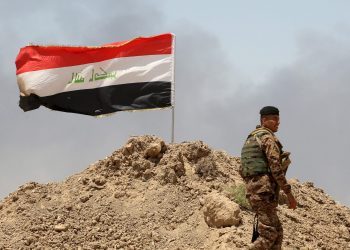,
WASHINGTON: “One, two, three; now lift.”
The words echoed around me as I suddenly felt the weightlessness that comes with being lifted by others. I could feel the hands of Navy medics checking my vitals, while one of them wrote my condition on a piece of paper and attached it to my chest.
“Get him out of here,” one of them yelled, slapping the side of the ambulance as it sped away with me inside, a “burn victim.”
But have no fear, I was in no pain. In fact, the wounds on my body were only make-up and paint. In reality, I was participating in major exercise Dec. 7 here called “CMAX, or Collaborative Multi-Agency Medical Exercise, which tests the capabilities of the local authorities to handle a major catastrophe.
According to officials, ever since Hurricane Katrina there has been a need to be ready for such incidents. Thirteen Washington D.C.-area agencies worked together on this exercise, which took a year to plan.
For CMAX, the Army, Navy, Air Force, Marines, civilian fire departments and other civilian emergency agencies responded to a simulated fuel explosion. About 100 people were injured in the exercise, and I was one of them.
I was able to see first-hand from the patient's perspective how efficient these agencies worked together. My scenario was made to be as realistic as possible. For the exercise, I was one of eight people in a van in the area of the explosion.
With 50 percent of my body burned, I was “unconscious” when firemen responded to the explosion. Firemen rushed into the mass confusion and calmly assessed the situation. They took care of the patients who needed immediate attention. Ambulances then responded to take care of the casualties.
Like a bucket brigade, local firemen passed my seven companions and me into the hands of Navy medics who, in turn, loaded us into ambulances. We were then driven to the helipad where we waited for two Army National Guard helicopters and two Air Force helicopters to arrive.
The helicopters were only the second stage of my trip to safety, but a critical part of my journey. Each helicopter had a medic onboard to make sure his or her patients received expert care.
Once we were strapped in, we were flown to Andrews Air Force Base, Md., where we were assessed and our vitals checked again. The crews from the Air Force Reserce Command's 459th Airlift Wing at Andrews were doing more than simulation care, though. They were making sure we victims were comfortable throughout, knowing we'd been up since 4 a.m.
At Andrews, we received medication intravenously. We lay on gurneys until it was time for our next stop. Doctors, nurses and medical technicians talked to those who were conscious and monitored those who were not.
Medics from the 459th provided triage for us until we moved to our next stage. From the Contingency Aeromedical Staging Facility, the medics bussed us to a C-130 Hercules from the Delaware Air National Guard.
Our next stop on the trip was Charlotte, N.C., to the Air National Guard base there. The reason? A hospital there was better equipped to handle the extensive burns that my companions and I suffered. Moving patients to another state for treatment is not unusual and it happened often during hurricanes Katrina and Rita.
Once the C-130 was ready, we were carefully loaded onto the plane and our stretchers were locked into place. We were in small spaces, but that is not a problem when you are not supposed to be moving anyway.
The nurses spent time during the one-hour flight reassuring us anxious patients and monitoring our vitals.
Once we landed, the medical crew there simulated unloading us. This stage of the exercise was solely to test the ability to deliver people to a far-away location. Very little time was actually spent in North Carolina. We left there quickly and soon were back at Andrews.
It was quite cold by this time and the last of the medics had been waiting for us to return from this last part of the exercise.
Once again, I was lifted by others and carried away. Once again, my vitals were checked, and once again, the information that was attached to me was reviewed. Only this time, I was miraculously cured: a free man.
From a patient's perspective, all the agencies involved worked very well together during the exercise. I felt like I was taken care of every step of the way. The transition of patients from local government agencies to various military agencies went flawlessly.
I reflected on how those who survived the hurricanes last year might have felt. I felt confident that if I were in such a situation, my best interests would be met and my health and well-being would be cared for with the same professionalism and concern I witnessed that day.









